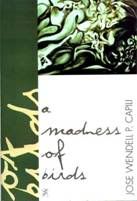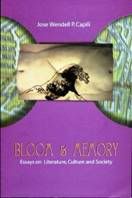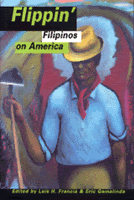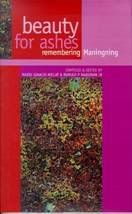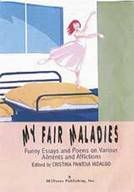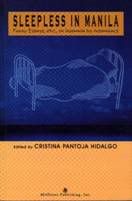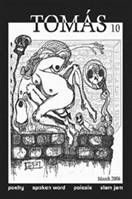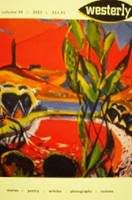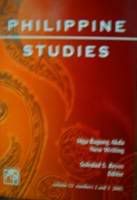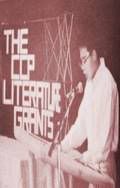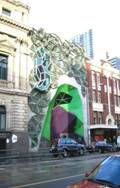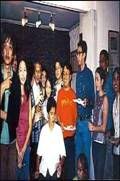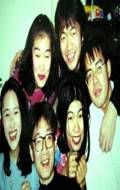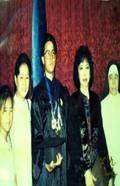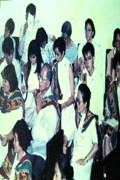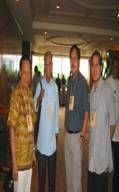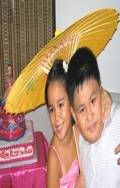There is scant information on pre-colonial standards for beauty in the Philippines, so preference for fair skin often gets blamed on colonization. No less than Jose Rizal lampooned this in his 1887 novel Noli Me Tangere. The book’s social-climbing character Doña Victorina sports artificial ringlets, a fake Andalusian accent, and a face thick with rice powder to appear white and Spanish.
In the 1940s to 1960s, the reign of Hollywood stars like Elizabeth Taylor and Audrey Hepburn further fanned the flames of mestiza worship. Virtually all leading ladies in Philippine cinema were high-nosed alabaster beauties—Paraluman, Carmen Rosales, Gloria Romero, Amalia Fuentes, and Susan Roces, to name a few. Even the Binibining Pilipinas winners that preceded Gloria Diaz, such as Myrna Panlilio and Pilar Pilapil, were mostly mestizas.
And then came Nora Aunor.
The Anti-Tisay
“Nora Aunor totally upset society,” says Joann Maglipon, editor-in-chief of YES! Magazine and www.PEP.ph (Philippine Entertainment Portal). “Suddenly, a small brown girl with very Filipino features had become the country’s superstar—making producers wait, moving politicians to send for her by helicopter, leaving advertising executives lining up. The country’s media were carrying daily images of a dark-skinned, wavy-haired girl who had once sold water by the railroad tracks. Seemingly overnight, the masa was dictating its taste upon the scene, sweeping aside an aghast elite, which fought back by looking down on the superstar. There is a reason why they call Nora phenomenal.”
The girl called “negra” by her schoolmates was able to command manic adoration from millions, and she hosted one of the longest running TV shows in Philippine history (“Superstar”, which ran for 25 years). To date, her record of acting awards is unsurpassed, and her legendary fanbase remains solid despite a prolonged absence from the entertainment scene.
“Nora was popular because of her wonderful voice, and people were in dire need of role models who were accessible,” says Professor Jose Wendell Capili, Head of Graduate Studies at the College of Arts and Letters of the University of the Philippines, and editor of the book Mabuhay to Beauty. “There were big stars after Nora, like Sharon [Cuneta], Maricel [Soriano], Judy Ann [Santos], but nobody can duplicate the phenomenon that she was during her prime. With the possible exception of Vilma Santos.”
Santos, however, was of the standard fair-skinned mold. As the original Eskinol girl, her translucent complexion drove a generation of Pinays to use astringent every night before going to bed.
Brown Sex Appeal
In the 1980s, “chocolate beauty” Tetchie Agbayani set another kayumanggi milestone by posing nude for the German edition of Playboy magazine. Twice.
“I think when Playboy came out, it dawned on people here na maganda pala ‘pag dark ka,” says Agbayani. Before Playboy, it took more effort for her to get noticed locally. “I was already in movies, but parang ang bagal. My late manager Franklin Cabaluna had this collection of Playboy magazines. Out of frustration, I joked, ‘If Playboy comes, I’ll pose for them.’ Months later, Playboy contacted him. They needed to do a feature on women of Asia. He was handling a lot of celebrities, so he brought this thick wad of pictures and showed it to them. When they gave him back the pictures of the girls they wanted, natawa siya. It was all me, I just looked different [in every shot] because the pictures were taken from different stages of my life.”
Agbayani went on to star in Hollywood films like The Emerald Forest, The Money Pit, and Gymkata. “I don’t think I would’ve stood out if I weren’t dark. Europeans, Westerners, they think that when you’re Asian, you have dark skin, dark hair, dark eyes. They don’t see an Asian girl to be mestiza.”
Bambi Arambulo was another sexy icon of the 1980s. She played the debutante in the camp classic Temptation Island, a movie about shipwrecked beauty contestants. “I was not morena, although my features were,” she says. “I was always envious of the ones who were born with a natural tan. But during my time, I truly doubt one's skin tone was ever the reason not to get picked for a show.” Arambulo has been based in the US since 1983. Does she feel more beautiful abroad where she can be considered exotic? “I never noticed the difference.”
“Personally, I find the morena beauty more magnetic, more sensual,” says Joann Maglipon of YES! Magazine. “She looks tighter and just more solid. But then I catch myself, What am I thinking? Why am I pitting one against the other? Must pigment actually define beauty? Pigment—which is an accident of birth, of race, of continent, of circumstance?”
Masa Media
If Nora Aunor were starting out today instead of 1969, Maglipon feels she will have a tougher time gaining acceptance. “The rise of whitening products tells you so.” She adds, however, that it might be wrong to say skin color is the dominant variable producers look for in actresses they want to build up. “Being businessmen, they are going for who the public will like. There are many informal feedback sources that they can use, such as their maids—it has to be the masa—also their colleagues, but they have to pick up the public pulse. They cannot do it in isolation.” Other intangible factors come into play, says Maglipon, such as feedback about work habits and viability for stardom. But all things being equal, if skin color was the only difference between two talents, she says the mestiza would have the edge.
There are exceptions. “A welcome surprise is the continuing viability of the Sex Bomb Dancers who have a show called Daisy Siete. It’s a minor surprise in the industry that this show has [lasted] way beyond what was expected, even after [the Sex Bomb Dancers] were booted out of Eat Bulaga, although later they returned maybe twice a week or so. They still managed to keep the show going. That means people can relate to them. Also, because they feature problems that are real to those of their age. So, maybe that’s the thing. But I wouldn’t be surprised if there was also pressure on these girls to look fairer.”
Morena model-turned-actress Bubbles Paraiso says she has so far not experienced any stereotyping. “I don’t know if my complexion limits my roles, because I’ve only started in showbiz. Before, they would always have mestizas portray rich roles and morenas poor roles, but so far, most of my roles have been rich!”
Undeniably, though, many comic acts still portray dark people as objects of ridicule. “When you have TV shows making a mockery out of all these snub-nosed people,” says Maglipon, “then you create another generation that’s going to believe their noses are not good enough, a generation that feels bad about itself, that must go for cosmetic surgery.” By her observation, dark and flat-nosed people are only able to avoid comic typecasting “when they’re very tall, and have the features of a ‘black beauty’, because then they take on some Caucasian or Western features that offset the Pinoy features.”
A recent trend in show business has been the sudden whitewashing of the skin tone of erstwhile morena celebrities. “The young . . . are pressured when [they see] their kayumanggi heroes turn fair,” comments Bobby Caballero. “We’ve become racists in our own brown islands.”
The media plays a huge role, concludes Paraiso. “The more the media presents a Filipina beauty as someone beautiful, the more Pinays will take pride in [their] skin color. ‘Fair is beautiful’ has to be forgotten, and ‘I am beautiful’ should be instilled. The more the media features morenas, the more people will accept that our natural complexion is indeed beautiful.”
But advertising is the hand that feeds media, and things get complicated.
Morenas in Advertising
Nandy Villar, Managing Director of McCann Erickson, says that twenty years ago, morenas usually got their break in advertising only after winning major beauty pageants. “Even then, they weren’t big icons. Those who made it big were all fair-skinned. One of the biggest was Alice Dixon, who became famous for her ‘I can feel it!’ Palmolive ad.”
Other morena beauty endorsers usually had a prior claim-to-fame before they bagged advertising contracts. “Twenty years ago, toilet soaps like Palmolive and Lux were the beauty brands,” says Villar, “and Eskinol seemed the only other beauty product advertised on top of the soaps. Lux used the two biggest names in 1988, Sharon Cuneta and Kuh Ledesma. [Kuh] had always been as she is now, morena. But her celebrity status allowed Lux and its fans to go beyond her skin tone. Soon after, came the pre-glutathioned Regine Velasquez, and Pops Fernandez, who was also morena.”
Villar says beauty products today still favor fair-skinned women. “That’s our cultural standard for beauty, especially among the mainstream market. Many times, the choice for morena beauties happens when the ad wants to portray characters that are closer to real women, like Lumen of Surf.”
Model Rissa Mananquil is an exception, having clinched coveted beauty endorsements like Pond’s and Vaseline lotion despite being dark. “When I was a kid, I had a playmate who called me ‘negra’,” she says. “But I never grew up thinking I was ugly.” In 2001, she was part of a Bennetton international ad campaign in New York. She does not recall losing any modeling jobs because of her skin color. “Thanks to kayumanggi forerunners in the industry like Anna Bayle, Tweetie de Leon, and Angel Aquino—they paved the way for my morena batchmates and myself.”
In the late 1970s, Anna Bayle’s exotic looks and distinctive walk transported her to Paris and New York, where she became the “First Asian Supermodel”. Tweetie de Leon won the Supermodel of the Philippines title in 1987 and has outlasted many of her fairer-skinned contemporaries as a product endorser. In the early 1990s, Angel Aquino was one of the first unknown morena models to spearhead the launch of a major shampoo brand (Pantene).
The openness toward darker models ebbs and flows, however. Morena TV host Bianca Gonzales, whose first name ironically means “white” in Italian, started out as a commercial model in 2000. “It might be harder for Pinay models like me this time around,” she says, “more than three, four, five years ago, with the influx of half-Filipino, half-foreign models around.” She says she has lost jobs to fairer-skinned models twice in the past.
Bubbles Paraiso began modeling in 2001. When she first started going to VTR’s, her manager told her she needed to get bleached white if she really wanted to get jobs. “I kind of got discouraged thinking the only way was to go white, which I didn’t want to do, but fortunately after that, I landed a TV commercial because of my color—it was a summer TV commercial for a soda, so they wanted someone tan.”
Kayumanggi Chinese-Filipino model Trixie Chua, a runner-up in John Casablancas’ Look of the Year in 1988, did not experience any direct discrimination while auditioning for commercials, but saw subtle signs that her skin color was an issue. “They'd tell you, ‘thanks, we've booked someone’, and you'll just hear that [the job] went to a non-morena model. I landed more campaigns in Singapore in a shorter period of time than in Manila.”
Bobby Caballero witnessed many mestiza vs. morena encounters during his heydays in fashion and advertising in the 1970s and 1980s. “[In fashion shows], mestizas were the top choice. Dark-skinned models were plugged in when shortages came up. Dante Ramirez shook the scene with his towering dark goddesses—Diwata, Dayang Dayang, Elektrika—[but] the buzz was short-lived. Mag editors and ad agencies still preferred ‘kutis porcelana’. I was with Ace Compton (now Saatchi), and kayumanggis didn't even make it past the brainstorming talks. [Mestiza beauty] Maritess Revilla, the Camay Girl, held the throne for years. We'd shoot test commercials and air them in Cebu and Davao, but we never invested in kayumanggis for the acid test. My ‘Iba na ang matangkad’ Star Margarine campaign had [fair-skinned] Aurora Pijuan, then Miss International, but she was [still] considered [dark] by the client. When we launched Levi’s, no kayumanggis made it to the list.
“Then, we were signed up by Hyatt Hotel with Tita Chito Madrigal for the La Concha fashion shows. It took a cosmopolitan mind like Tita Chito, prodded by gutsy Santiago de Manila (designer Ernest Santiago), to get the white girls worried about getting tans to win solo spots. Exoticism became the rage, and Gary Flores produced Kalipayan. The tisays begrudgingly worked up tans by the Hyatt pool. Controversy ensued when Gary created Group A and Group B models. Group A were the tisays, Group B were the morenas. Anna Bayle was put in Group B, and she stormed out of the Hyatt, and later on to Paris, New York, and Vogue cover fame.
“When I did our Clio award-winning TV commercial ‘The Beauty of the Philippines, Philippine Air Lines Shining Through’, we used sultry olive-skinned Tweetie de Leon and Melba Arribas, together with not-so-mestiza PAL cabin crew, [the] Charisma Girls. “I continue to work with fashion directors, like Raymond Villanueva. In his book, Ria Bolivar is today's top kayumanggi ramp star. Rajo Laurel, light years ahead in attitude and style, uses dusky Anna Casas.”
Kayumanggi Rising
What spurred the increased openness to a non-white paradigm? Professor Capili enumerates key incidents in history: “The emergence of the African-American and Asian-American movement; the liberation of colonized countries in Asia and Africa after World War II; the emergence of non-white artists in mainstream cultures, as exemplified by the domination of Motown music during the 1960s and 1970s; the emergence of colored supermodels like Anna Bayle, Naomi Campbell, and others—these are circumstances that were not there before World War II. It is still a white man's world, because the world is controlled by leaders of predominantly white cultures, but the glass ceiling has been broken. It is now possible to move across disciplines despite skin color.”
To Joann Maglipon, however, color and race biases are still very much around. “Right here, you see it. How Filipino parents and Pinoy media teach kids to think that short-legged, snub-nosed, and dark-skinned are funny caricatures of the human form. Sure, there’s been a bit of progress, but not enough to acknowledge that brown is beautiful.”
In Fairness . . .
Most Pinays still want to be fair. In 2004, a Synovate study showed 50% of Filipinas used a skin lightening product. Today, whitening products control more than half of the local skin care market. Even the 22-year-old daughter of trailblazing morena beauty Gloria Diaz (Isabel Daza) is endorsing a whitening product.
“I think now [being white] is more associated with beauty than with one's rank in society,” says Villar of McCann Erickson. “It matches our standards for cleanliness and hygiene. Culturally, we see the maputi as mukhang mabango, fresh, and neat. In fashion, we also believe that if one is maputi, one can wear any color of clothing. [Wanting to be white] is really an Asian thing, more than a Pinoy thing.”
Rissa Mananquil says if she met a girl who used whitening products, she would not try to talk her out of it. “Just because you think something is ugly, doesn’t mean the world agrees with you, but to each his own. Being a beauty columnist as well, I get to interview foreign principals of global make-up brands. They are always puzzled why Asians and Filipinos want to look fairer. In the US and Europe, women go crazy for self-tanners and bronzers because being tan is their definition of beauty.”
“I am anti-whitening for myself,” says Bianca Gonzales, “but if I have friends who want to have fairer skin, I will support them. What I am for is supporting Pinays who choose to love their brown skin . . . and not feel pressured to spend [their] allowance on whitening products.”
“This whole beauty thing ends up making things ugly,” observes Joann Maglipon. “That desk job, those house chores, being of modest means. Why? Because beauty tells you these things keep you from having access to the huge vacation, the wealthy and indulgent partner. It’s hard to have smooth, fair skin when you have to take the tricycle, then the jeep, and finally the MRT, to get to your desk job.”
Tetchie Agbayani is more bothered by the lack of self-acceptance than by whitening per se. “If you’re going to be happier with fairer skin, go for it. But why are so many women not happy with what they have? I would address the root causes of that mindset.” She cites the black-to-white mutation of Michael Jackson as an extreme example. “It’s called body dysmorphic disorder. You look in the mirror and see many things wrong, but when others look at you, there’s nothing wrong. So maybe what’s wrong is not how you look, but how you see yourself.”
Beauty Beyond Color
Black, brown, or white, natural or induced, beauty comes in many colors, and to deride a person’s preference for one or the other seems equally hackneyed in this enlightened age. Could it be that the rise of kayumanggi beauty is significant not only because it opened eyes to the merits of a darker coloring, but also because it stirred a deeper and more universal chord among mestizas and morenas alike? Nora Aunor represented something more than just her dark skin—she was a myth made real. Talent enabled her to rise above society’s prejudices and create a more egalitarian model for attractiveness based on ability and empathy more than external looks.
Maybe kayumanggi beauties earn their place in the hearts of people not simply because they are brown and proud of it, or because they don’t try to be white, but because they prove that, brown or white, bleached or spray-tanned, a person’s worth is not to be judged by the color of her skin.
-------------------- Skin color bias, according to a morena icon turned psychologist
When it comes to beauty and skin color, Tetchie Agbayani is in the rare position of celebrated subject and trained observer—from beauty queen/fashion model in the late 1970s and Playboy model/movie actress in the 1980s-1990s, she became a psychology teacher at St. Joseph’s College in 2004. Now completing her Master’s Degree in Psych from the Ateneo, she ponders the origins of skin color bias:
- “We can’t attribute it solely to colonial mentality. Let’s look at Japan. Japan is extremely nationalistic. They like their own. They’ve never been colonized. They have fair skin. And yet, they still use whitening products. So it’s hard to say it’s [due to] colonial mentality. It’s more deeply rooted, I believe.”
- “It has something to do with the collective unconscious, I think. Carl Jung talked about this wellspring of knowledge that connects all people, all cultures. He talks about archetypes. All communities, from the Inuits to the Eskimos to the tribes of the Amazon, recognize certain universal symbols. I think it has something to do with the notion of white is good, black is bad . . . because of that collective unconscious.”
- “In our bird farm, the birds with more colorful feathers attract more mates.” (Related to natural selection, standing out from the crowd is an advantage in the biological competition for mates. This evolutionary construct could partly explain the desire to be whiter or darker than one’s peers.)
(This article originally appeared in Marie Claire magazine, November 2008.)



